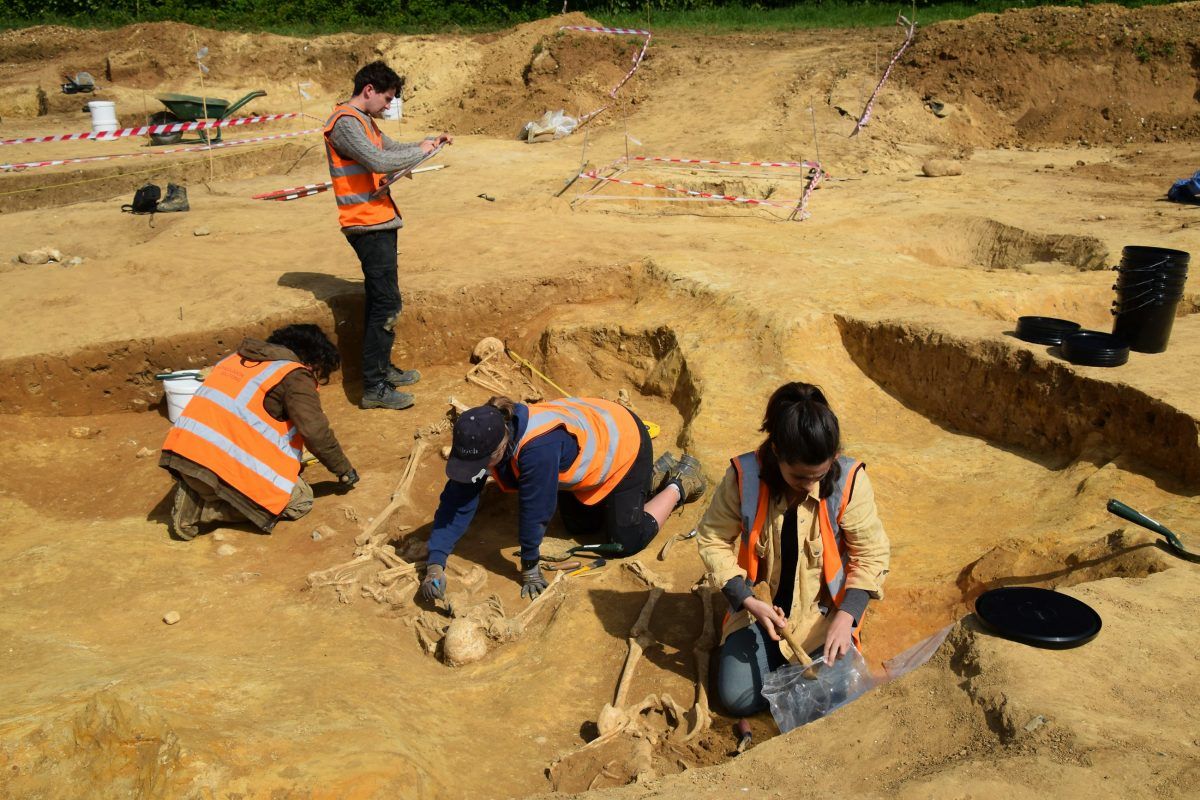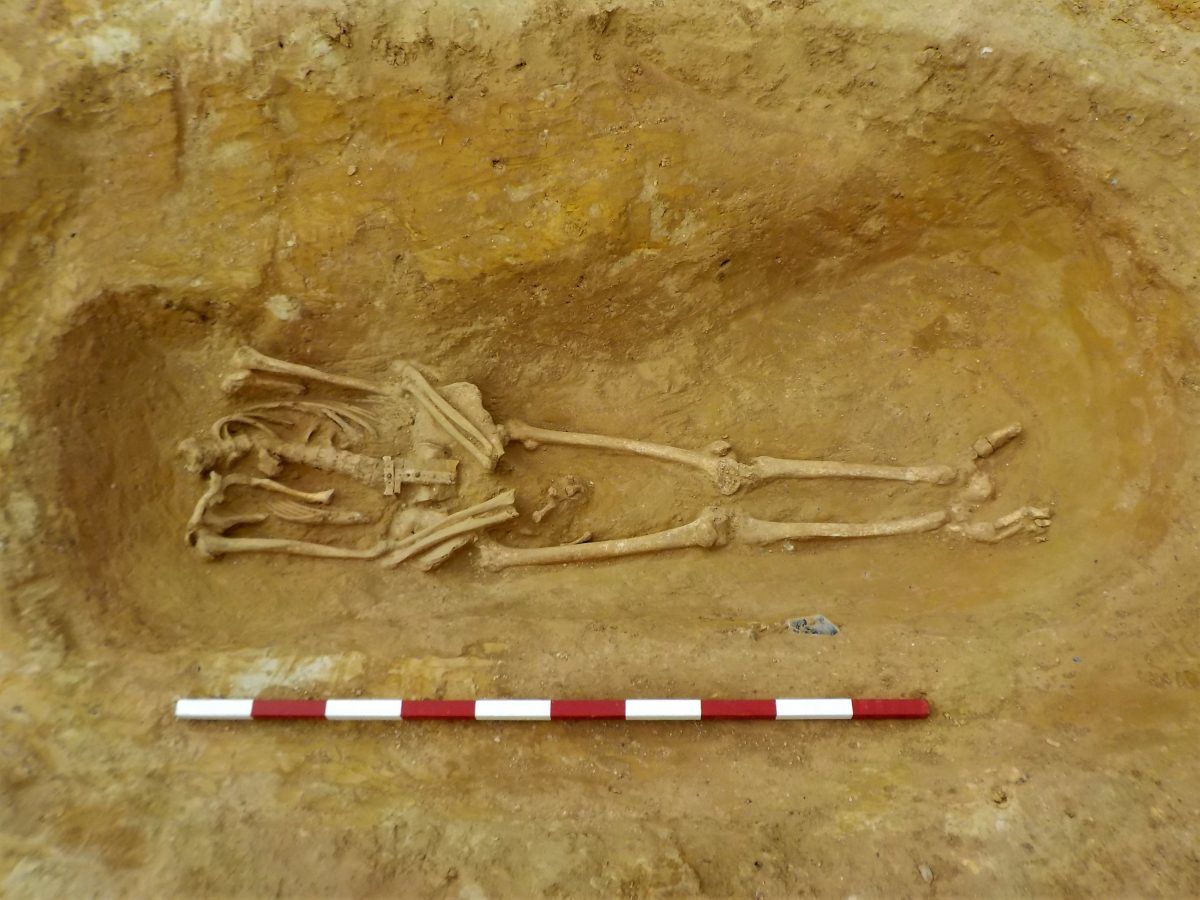A grim haul of decapitated skeletons with their heads placed between their legs has been uncovered by archaeologists excavating a Roman burial site.
Of the 52 skeletons discovered during a dig at Great Whelnetham, near Bury St Edmunds, Suffolk 17 were decapitated.
Experts said the headless skeletons Included men, women and a couple of ten-year-old children.
According to archaeologist Andrew Peachey, the remains are not the result of executions.

He said: “The incisions through the neck were post-mortem and were neatly placed just behind the jaw – an execution would cut lower through the neck and with violent force, and this is not present anywhere”.
Mr Peachey, from excavation company Archaeological Solutions, added that the presentation of bodies appeared to be an ancient funeral rite that could be associated with a cult.
He said: “This appears to be a careful funeral rite that may be associated with a particular group within the local population, possibly a cult or a practice that came with a group moved into the area”.
Examination of the skeletons has led to some interesting discoveries.
Mr Peachey said: “They were well nourished, and several had very robust upper arms/bodies consistent with a working agricultural population.

“We have a fairly evenly mixed population by gender, with a couple of juvenile skeletons but most were at least middle aged if not older.
“Their diet was plentiful enough to include significant natural sugars and carbohydrates, resulting in poor dental hygiene.
“Many dental abscesses were present but most were healed, while several had also carried TB – also common in rural-agricultural populations.”
Once the skeletons have been analysed they will go to a museum archive.
They were discovered during excavations ordered prior to building development work on the land.
by Isabella Nikolic

